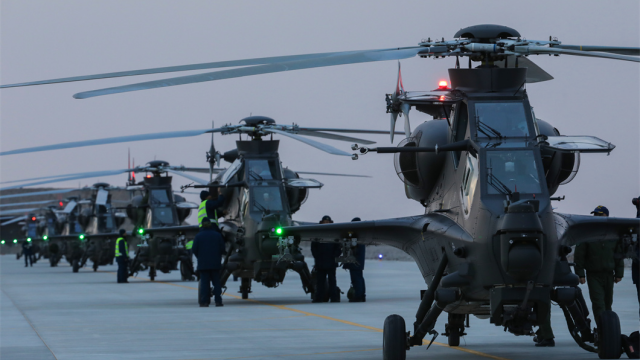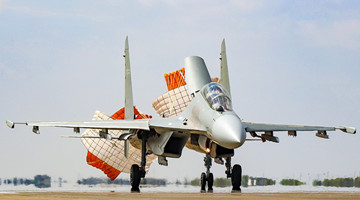BEIJING, Feb. 4 -- The news that the Mu Us Desert will disappear in northwest China's Shaanxi Province became hot news in 2020. Behind this 'green miracle' created by the Chinese people is a team from the PLA Air Force. They flew China's first-generation independently-developed Y-5 transport aircraft in western China to sow tree seeds and grass seeds to the desolate land.
At the beginning of the 20th century, the natural environment in northwestern China was severely desertified. The violent winds in the Mu Us Desert between Shaanxi Province and Inner Mongolia Autonomous Region continued to sweep sands and expand southward, forcing Yulin City in Shaanxi Province to move southward three times.
In 1982, the No.1 Group under a transportation search and rescue regiment of the PLA Air Force launched an aerial seeding and afforestation mission in west China. This Group was the first military unit to perform such a mission. Over the next 39 years, they have sprayed more than 10,000 tons of seeds over more than 300 seeding areas in above 130 counties (cities) throughout seven provinces (regions), including Inner Mongolia, Sichuan, Guizhou, Shaanxi, Gansu, Qinghai, and Ningxia. The operating area exceeds 26 million mu(17.3 trillion square meters).
Some people wondered why the aerial seeding and afforestation mission has to use the Y-5 transport aircraft, now that the PLA Air Force has already commissioned many advanced models of aircraft. The reason is that the Y-5 has a very stable flying performance, especially good at low-altitude flight and being able to take off and land at airstrips. At the same time, it boasts an economical operating cost.
Aerial seeding and afforestation missions are mostly carried out in barren mountains and ridges, vast deserts, and Gobi wastelands. There are no control towers for aircraft, and the operations have to be completed at ultra-low altitudes, which are difficult and dangerous. The undulating Gobi, the unpredictable sand storms, and the erratic hot and cold air currents make it much more challenging to fly in the seeding areas, compared with regular training flights.
Besides of the challenges from the nature, the pilots had to endure the honing of their willpower. With the dreams of becoming flying heroes, these pilots who graduated from military aviation schools ended up flying transport aircraft to sow seeds in the bleak natural environment in northwest China.
When I just graduated, I was just shamed to tell my instructor my duty. The first time seeing this endless sea of sand, I thought to myself that the seeds sowed could not grow," said the veteran pilot Zhang Jiangang. But when Zhang flew back to the area where he sowed after two years, the layer of green seedlings on the desert touched him deeply.
Thirty-nine years on from 1982, the aerial seeding and afforestation mission by the Air Force has never stopped. They have successfully air-seeded and afforested an area of 5.91 million mu (3.9 trillion square meters), and the vegetation coverage has increased from about 5 percent to the current 50.4 percent. They made the impossible possible. For now, the Yulin area of Shaanxi has transformed from a desert area to a granary with an oasis.









